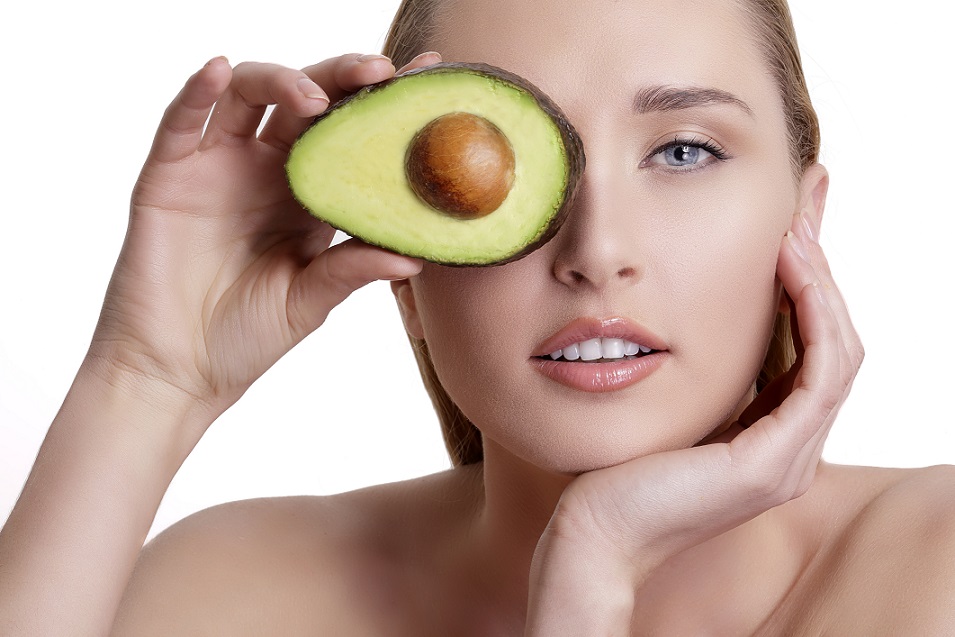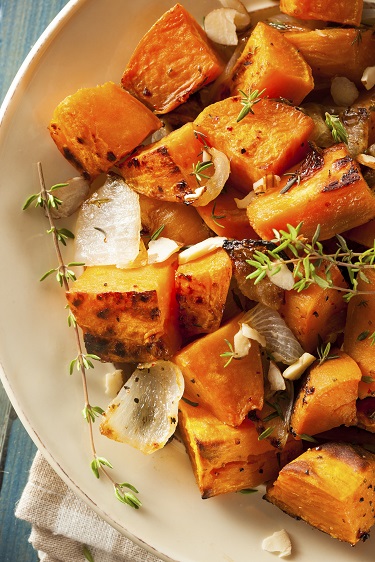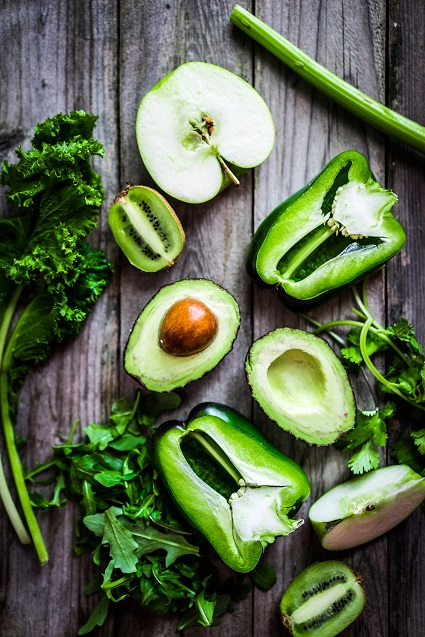 Do you want to reach your full potential of glow and radiance? Or are you content to simply clear your skin but have the same grey and lifeless tone as everyone else on the street?
Do you want to reach your full potential of glow and radiance? Or are you content to simply clear your skin but have the same grey and lifeless tone as everyone else on the street?
The reality is that as an acne patient, you have three possible futures. Firstly, you could follow the path of mainstream dermatology, with creams and benzoyl peroxide leading to years more acne.
Secondly, you could acquire a moderate knowledge of the many natural acne cures, and finally clear your skin. Or finally, you could really get the skin of your dreams, and push your skin to a level you never thought imaginable.
If you refuse to settle for anything less than your full potential, then what you need are the advanced nutritional hacks, beyond the bread and butter natural strategies. We’ve discussed a few of them on this website already. Cold showers are brilliant for skin tone, lightly steaming broccoli encourages the release of anti-inflammatory sulforaphane. Black coffee is superior to milk coffee, since milk significantly reduces antioxidant absorption (study).
Now, this article will supply you with another secret weapon – the avocado.
Avocados can increase acne nutrient absorption
To sum it up, the avocado fruit has a variety of acne-clearing powers. It’s fairly nutritious, has a strong fat profile, and has all sorts of powers in studies. But the one special trick which we’re most interested in is increasing vitamin A and carotenoid absorption when eaten with a meal.
Vitamin A is the most effective nutrient you can take for oily skin. It binds to receptors in your sebaceous glands and downregulates their activity to normality. Furthermore, vitamin A keeps a leash on keratin production as well, the second main player in clogged pores.
Carotenoids, meanwhile, are a wide family of fat-soluble antioxidants which include beta-carotene and lutein. Some carotenoids convert to vitamin A, while others remain behind and protect your face against free radicals.
By adding avocado to a meal containing these superstars, you can extract far more than you would otherwise, and that’s why avocado is a secret nutritional hack for acne. The average person eats avocado alone, thinking of heart health, but its uses go beyond that.
The proof
To date, two studies have been performed on this superpower.
The first study contained two separate experiments. Firstly, a 12 patient group was served a meal of tomato sauce, which was especially rich in carotenoid antioxidants. They ate it both with and without fresh avocado, and the second 12-strong group were served carrots, either with or without avocado-containing guacamole.
In both experiments, the avocado significantly increased carotenoid absorption into the bloodstream, and the conversion of carotenoids to active vitamin A. The tomato group had 2.4 higher beta-carotene levels compared to the tomatoes without avocado, and the carrot group had a 6.6 fold and 4.8 fold enhancement of beta-carotene and alpha-carotene absorption respectively.
In the tomato group, the avocado increased the mean conversion of carotenoids to active vitamin A by 50%, from 22% to 33%. The conversion range among patients increased from 5-47% to 22-48%, while in the carrot group, the avocado increased the conversion of carotenoids from 27% to 34%, an increase of 26%.
Our second study was similar, again testing two meals. The first was salsa with bread, while the second was a salad. This included carrots, lettuce, baby spinach (three carotenoid rich vegetables), bread, and a dressing which was fat-free to avoid skewing the results. This time, the dosage of avocado was varied as well, with 75 grams and 150 grams.
In the salsa group (which was 11 patients strong), adding avocado increased the absorption of beta-carotene 2.6 fold. Lycopene was also tested in this study, a carotenoid found in tomatoes and watermelon; avocado enhanced its absorption 4.4 fold.
Next – the 6 best vitamins and minerals for naturally clear skin
The salad experiment was just as good, as 150 grams of avocado increased the absorption of alpha-carotene, beta-carotene, and lutein by 7.2, 15.3, and 5.1 fold respectively. Interestingly, there was no variation between the 75 gram and 150 gram dosages of avocado.
What you must do
If you want to make the most of your nutrients, avocados are one of the best secret weapons around.
The ordinary acne patient reads about avocados in a magazine, and eats one as a snack every day. The advanced acne patient combines avocado with carotenoid rich foods, and enhances the powers of both.
Salads are the ultimate solution, as you can specifically select the optimal ingredients for carotenoids and vitamin A. These include all varieties of lettuce except for iceberg, spinach, kale, pumpkin, tomatoes, watermelon, carrots, bell peppers, and more.
Remember that low vitamin A does not equal low carotenoid – watermelon is high in the anti-inflammatory carotenoid lycopene, for example. Sweet potatoes are the optimal carbohydrate source for acne, so add avocado to a plateful after a gym session. Soups are ideal as well, whether based on carrots, tomatoes or bell peppers.
You almost certainly have your own acne-friendly recipes which you can easily tweak. The beauty is that only small quantities of avocado are required, as the study demonstrated.
7 natural topical treatments which could transform your skin
The end result of this avocado trick will be very visible. Significantly less oily skin thanks to the vitamin A. A significantly brighter and healthier skin tone thanks to the carotenoids, and significant reduced acne thanks to both.
If you’re unaware, then there’s two types of vitamin A. Retinol is the animal form found in eggs and dairy; this converts to active vitamin A extremely easily. Beta-carotene and alpha-carotene, meanwhile, are the plant forms of vitamin A. They are “pro-vitamin A” compounds, which the body has to convert first. This conversion is often highly inefficient, as poor as 5% in genetically predisposed people.
Combining avocado with foods like carrot can unlock this bonus vitamin A and unlock the extra potential for your skin. In fact, the first study found that people with inferior carotenoid conversion benefitted the most. If you’re a vegan and can’t eat animal sources like eggs, then avocadoes are a particularly excellent weapon.
The science
 How exactly does it work? In the study, the scientists declared the high fat content of avocado to be responsible. However, a separate study analysed tested canola oil, butter, and soybean oil on carotenoid absorption in salad.
How exactly does it work? In the study, the scientists declared the high fat content of avocado to be responsible. However, a separate study analysed tested canola oil, butter, and soybean oil on carotenoid absorption in salad.
Canola oil, which is mostly monounsaturated fat, was superior to the saturated (butter) and polyunsaturated fats (soybean). The other two were dose-dependent, especially soybean oil, whereas canola oil enhanced the absorption at any dosage.
The avocado is 71% monounsaturated fat on average, mostly in the form of oleic acid. This may be the explanation, but the study reveals a wider picture – that not all fats are created equal for enhancing fat-soluble nutrient absorption.
Could the specific fatty acid composition in avocado be even better than canola oil? It’s likely, as the 6.6 fold and 4.8 fold increases were disproportionately huge.
Among fats casually labelled “monounsaturated”, there are still significant differences. Oleic acid is found in 61% and 65% concentration in canola oil and avocado oil, but avocado oil has a 5.8% concentration of a rarer monounsaturated fat called palmitoleic acid. Canola oil has none. Avocado oil is 14% palmitic acid, while canola oil is 4%.
There’s many such variations, so the mystery continues.
Do avocados have any downsides?
There’s one which appears in internet mutterings sometimes, and it relates to the fat content once again. The avocado has a very poor ratio of omega fats – 18:1 in favour of omega 6s.
For health and for acne, it’s ideal to have a balanced omega ratio of 1:1, or at the most, 3:1 in favour of omega 6. Omega 3s are needed to constrain the immune system, but omega 6s fuel it, resulting in more inflamed acne. The ratio of avocados is very poor compared to walnuts, for example, with 4:1 in favour of omega 6.
Hence, the omega 6 content is by far the main criticism levelled at avocado in natural health communities. Paleo followers are particularly split, as another chunk of paleo-ites love avocadoes for their low carbs and easy place in a ketogenic diet (where you switch to fat for burning energy).
But are the omega 6s really a problem? No, because while the ratio is terrible, the content is too low to affect your wider dietary intake.
A mere 15.5% of the 15 grams of total fats in avocado are polyunsaturated; 14.7% are omega 6s and 0.8% are omega 3s. That equals just 1.1 grams of omega 6 per 50 grams of avocado, a suitable serving for our objectives. Meanwhile, by eating a meal of salmon you ingest 2.3 grams of omega 3s. The ratio is poor for acne on paper, but no problem in practise unless you somehow get addicted to them.
Better yet, the broader fat composition is beneficial for acne, even ignoring the nutrient absorption benefits.
65% of the fat in avocado is oleic acid, the most common monounsaturated fat. Oleic acid (omega 9) is responsible for the heart benefits of olive oil observed in Mediterranean counties, and has strong acne-clearing properties when eaten.
Read Annihilate Your Acne – get the diet that could transform your skin!
This study observed a decrease in C-reactive protein and interleukin-6 after oleic acid consumption, two of the classic pro-inflammatory biomarkers. This study concluded that among 1556 Japanese men, those with diets richer in oleic acid enjoyed significantly reduced CRP. The relatively rare palmitoleic acid (5.6% of avocado fats) was linked to more restful and rapid sleep in this study, and sleep deprivation is a one way ticket to acne city.
The only legitimate acne risk from avocado is an allergy, but they’re fairly rare, if not unheard of. What’s more, there are no specific compounds like tomatine in tomatoes or glycoalkaloids in potatoes which are known to trigger sensitivities. The sugar content is miniscule at 0.7 grams per 100 grams. The odds are high that you can take advantage of avocado with no headaches.
Is there any bonus nutrition for acne?
 Yes, and this is another advantage. Firstly, the vitamins and minerals in avocados aren’t really their forte. Interestingly, the area where they’re far more hyped up is where they are less potent. 50 grams of avocado contains…
Yes, and this is another advantage. Firstly, the vitamins and minerals in avocados aren’t really their forte. Interestingly, the area where they’re far more hyped up is where they are less potent. 50 grams of avocado contains…
- Vitamin C – 8% of the recommended daily allowance.
- Vitamin A – 1%.
- Magnesium – 3%.
- Zinc – 2%.
- Vitamin E – 5%.
- Potassium – 7%.
- Manganese – 3%.
- Vitamin B6 – 6%.
At first glance, a decent but unspectacular selection. There’s a strong variety of nutrients, but exceptional quantities of none. The lettuce, carrots and bell peppers will provide the bulk of the acne-clearing vitamins in your salad bowl.
However, the fat-soluble nutrients within the avocado will benefit from its own enhanced absorption. If we extrapolate the roughly 5 fold increase, then the vitamin E could actually equal 25% of the RDA.
Avocados also score 1922 on the ORAC antioxidant scale, and hence 961 with our optimal serving. That’s merely good rather than great, but most of those antioxidants are carotenoids. If we extrapolate the absorption boost again, then the real score could be a spectacular 4805, more than a serving of strawberries.
This affects individual antioxidants as well. For instance, avocado contains 271mcg of the powerful carotenoid lutein, and this pales next to kale, the world’s best lutein source with 18,246mcg. But avocado has the absorption powers, making it the equivalent of more like 1355mcg. Avocados also contains four rarer carotenoids: trans-neoxanthin, neochrome, 6-epoxide and chrysanthemaxanthin.
One interesting study tested avocado oil (15% of raw avocado by weight) on human skin cells. Compounds called polyhdroxylated fatty alcohols exerted a protective effect against UV radiation, acting as a non-sunscreen natural buffer.
This study was topical, but in the likes of eggs and dark chocolate, antioxidants are proven to concentrate in skin cells after they’ve been eaten. Avocados would be a godsend for acne if the process was replicated. PFAs are unique to avocado among land-dwelling plants; they’re only found in seaweeds elsewhere.
Avocados boost your carotenoid absorption from other foods, but they also deliver many of their own antioxidants.
Conclusion
Adding avocados to carotenoid rich foods is one of the great secret acne hacks available.
Do you regularly eat salads with lettuce, carrots, watermelons, or maybe tomatoes? Then add 50 grams of avocado and continue on for 4 weeks. One day, you might glance in the mirror and be shocked at the glowing quality of your skin.
This study found that dietary carotenoids contributed measurably and significantly to healthy skin colour. This one found that carotenoid consumption correlated to skin yellowness, AKA the “glow” which we always talk about.
The more advanced knowledge you gain, the better your chances to get great skin. You have the potential to make your skin look alive rather than clear but unhealthy.
The tricks and secrets don’t end here, as an equivalent strategy is adding black pepper to savoury foods. The compound piperine enhances the absorption of antioxidants like curcumin (the superstar of turmeric), in addition to minerals such as selenium. This article on cheap tricks for acne is recommended reading.
If you refuse to ever accept mediocrity in your skin, then avocado is the food for you.
NEXT: discover the root causes of acne and banish your pimples forever
Thanks for reading!
I’m currently eating two avocados a day, is that too much? I’m just trying to consume a lot of calories as I’m at my peak stage for building muscle and I’m very active. Also, do you do meals plans?
It depends on the fats you eat in the rest of your diet, but for the average acne patient I highly doubt that two avocados daily is too much. If you were particularly deficient in carotenoid antioxidants then it would be beneficial. No meal plans at the moment.